Key Takeaways
- Chatbots have evolved from rule-based responders to dynamic, AI-powered tools that offer intuitive, human-like interactions.
- Future chatbots will leverage AI agents, voice input, hyper-personalization, and IoT integration.
- Key trends include multilingual capabilities, predictive intelligence, and chatbots that manage full processes—not just answer questions.
- Advanced chatbots improve efficiency, lower costs, and enhance customer satisfaction by offering 24/7 personalized support.
- Jotform AI Agents simplify chatbot creation with no-code tools that turn static forms into interactive, data-driven conversations.
- Challenges include data privacy, ethical AI use, and ensuring smooth handoffs to human agents for complex issues.
Chatbots have come a long way from the clunky, rule-based programs they once were. Now they’re dynamic AI-powered tools that transform how brands connect with customers and how people handle daily tasks. The future of chatbots is all about moving beyond robotic scripts to natural, intuitive conversations that feel as seamless as chatting with a friend.
In this post, we’ll explore the evolution of chatbots, key trends shaping their future, and challenges businesses face when adopting them. We’ll also highlight how Jotform AI Agents help businesses create smooth, conversational experiences that enhance customer interactions and simplify workflows.
Evolution of chatbots
The early days: Basic and rigid
In 1966 Joseph Weizenbaum created a simple chatbot called ELIZA, designed to mimic a psychotherapist. ELIZA relied on keyword recognition to generate responses but lacked real understanding. While revolutionary at the time, it struggled with anything beyond basic pattern matching.
For decades, chatbots remained limited. Rule-based models dominated, often appearing on company websites to answer FAQs. These bots could handle structured queries but fell apart when conversations strayed from predefined paths.
The AI revolution: Smarter and more adaptive
The 21st century brought a major shift, with chatbots becoming more intelligent through machine learning and natural language processing (NLP). Generative AI models, like GPT (Generative Pre-trained Transformer), reshaped the chatbot landscape by enabling more human-like conversations. These AI-driven systems learned from vast amounts of text, improving their ability to understand context, detect user intent, and generate relevant responses.
Today, chatbots aren’t just answering simple questions—they’re handling appointment scheduling, processing transactions, and even offering personalized recommendations. Thanks to integrations with third-party services, they can pull real-time data and automate workflows that once required human intervention.
The next frontier: AI Agents and hyper-personalization
Looking ahead, chatbots will become even more sophisticated. AI-powered agents will go beyond basic conversation, adapting to users’ preferences, emotions, and behaviors. Industries like e-commerce, healthcare, finance, and education stand to benefit from these advanced chatbots, which will offer
- Conversational AI that feels human: Less scripted, more natural interactions
- Multimodal capabilities: Combining text, voice, and visual inputs for richer communication
- Predictive intelligence: Understanding user needs before they even ask
- Seamless integration: Pulling from multiple data sources to offer more accurate responses
Pro Tip
Try Jotform’s AI Chatbot for WordPress, an AI chatbot plugin embedded in your site that auto-trains on your pages, answers in real time, and routes visitors to the right forms for faster conversions.
Key trends shaping the future of chatbots
Integration of AI agents
Traditional chatbots handle routine tasks, but AI agents take things further. These advanced bots don’t just answer questions—they carry out entire processes autonomously. For example, an AI agent could analyze multiple data sources to recommend the best travel itinerary, confirm bookings, and email the reservations—all without human intervention.
Chatbots are becoming more competent thanks to AI breakthroughs like context retention and neural network-based decision-making. Businesses can offload increasingly complex workflows, allowing employees to focus on strategy rather than administrative tasks.
Enhanced personalization
The chatbot future revolves around personalization. Modern users expect tailored experiences in all facets of digital interaction, from product recommendations to marketing campaigns. Chatbots meet these demands using customer data — such as past purchases, browsing history, and personal preferences — to fine-tune their responses.
As an illustration, imagine a chatbot for a clothing retailer. Instead of suggesting random items or asking the same generic questions, the bot analyzes your purchase history and style preferences to recommend outfits. If you frequently buy sportswear, it might show you the latest athleisure line. It might display seasonal suit collections if you’re interested in formal attire. With more robust data analytics tools and machine learning algorithms, chatbots can predict user needs, proactively offer assistance, and provide hyper-relevant suggestions.
Voice-activated chatbots
Thanks to the popularity of devices like Amazon Echo and Google Home, voice-activated chatbots are quickly becoming a norm in various industries. These bots allow for hands-free interactions that merge seamlessly with daily life. A busy parent can simply speak to a voice assistant to order groceries, while a professional juggling multiple tasks can dictate a message or schedule a meeting.
Voice technology also benefits industries like healthcare, where patients can ask questions about prescriptions or schedule follow-up appointments without needing a phone line or internet browser. Additionally, voice-based customer service reduces wait times and improves accessibility for users with visual or mobility challenges. As speech recognition systems become more accurate, voice-activated bots will likely see broader adoption, making them a central pillar of conversational AI future development.
Multilingual capabilities
Given our increasingly connected world, businesses can no longer rely on English-only interactions. Multilingual chatbots powered by sophisticated NLP algorithms enable companies to engage global audiences, breaking down language barriers that might otherwise prevent efficient communication. For instance, a French-speaking customer who visits an e-commerce site can receive instant support in their native tongue, enhancing their overall experience and boosting the brand’s reputation.
Providing customer service in multiple languages is especially critical for travel, hospitality, and online retail sectors, where customer bases often span multiple countries. As NLP continues to advance, chatbots can pick up the linguistic nuances of various languages and cultural differences, allowing for respectful, culturally aware interactions that foster deeper connections with users worldwide.
Integration with Internet of Things
The Internet of Things (IoT) is a vast network of devices, from household appliances and wearables to automobiles, that communicate with each other through the internet. Chatbots increasingly bridge the gap between IoT devices and users by offering intuitive, conversational interfaces. Instead of fumbling through multiple apps to adjust the thermostat, turn off the lights, or check the status of a home security system, users can simply “ask” a chatbot to perform these actions.
In a business context, IoT integration can enhance smart offices. Imagine an office environment where an AI agent adjusts meeting room temperatures, books conference rooms, and orders supplies based on usage patterns, all communicated through a chatbot. With real-time data from sensors, chatbots can proactively solve issues, improving operational efficiency and creating an environment more conducive to employee productivity.
Benefits of advanced chatbots
Modern chatbots do more than answer simple queries. They can streamline workflows, deliver cost savings, and fuel innovation across organizations. Here are some of the significant benefits:
- Improved customer engagement: Chatbots keep users engaged by providing immediate, accurate responses. This can lead to higher satisfaction rates and a stronger sense of brand loyalty.
- 24-7 availability: Chatbots operate around the clock, handling inquiries outside regular business hours. This ensures customers never wait for assistance, increasing trust and convenience.
- Cost savings: Automating routine customer service tasks reduces the need for large human support teams, cutting labor costs and freeing up staff to tackle more complex issues.
- High-volume inquiry handling: Chatbots scale effortlessly, managing thousands of user sessions simultaneously. This makes them invaluable during peak traffic times, such as holidays or major product launches.
- Actionable insights: Advanced chatbots track and analyze user interactions, offering businesses data-driven insights into consumer behavior and common pain points, which can guide strategic decisions.
- Personalized experiences: By leveraging user data, chatbots can customize interactions to boost conversion rates, build loyalty, and enhance overall satisfaction.
Challenges and considerations
Despite the progress in chatbot trends, deploying these systems effectively isn’t without obstacles. Below are a few considerations:
- Data privacy concerns: Chatbots collect and process large volumes of user data. Ensuring compliance with regulations such as GDPR or CCPA and maintaining rigorous data security measures are paramount to build user trust.
- Continuous learning: For chatbots to stay accurate, they must be regularly updated and retrained on new data. As language and user expectations evolve, an outdated chatbot can quickly become more of a liability than an asset.
- Ethical use of AI: AI-driven solutions must be transparent and fair. Bias in training data or unethical use of user information can damage a brand’s reputation and lead to legal repercussions.
- Handling complex queries: While chatbot capabilities are expanding, some tasks or inquiries still require human intervention. Balancing automation with a seamless handoff to human agents when needed is critical for optimal user satisfaction.
- Integration challenges: Incorporating advanced chatbot solutions into existing technology stacks can be complex. Companies must plan carefully to ensure new tools integrate well with legacy systems, CRM platforms, or other internal databases.
The future of chatbots is incredibly bright, fueled by innovations in AI chatbot development and growing demand for instant, personalized digital interactions. Tools once seen as novelty gadgets have matured into indispensable resources that can automate tasks, engage customers at scale, and generate valuable insights into user behavior. As chatbots evolve into powerful AI agents, they’ll respond to questions and carry out complex processes autonomously, reshaping how businesses operate.
Emerging trends suggest that chatbots will continue to become more intuitive and accessible, from enhanced personalization to voice-activated chatbots and multilingual capabilities. However, organizations must remain mindful of challenges, including data privacy, ethical considerations, and integration issues. By adopting robust development strategies, companies can harness the full potential of conversational AI to stay ahead in a rapidly changing market.
How Jotform AI Agents keep you ahead in chatbot technology
For businesses looking to capitalize on the future of chatbots, having the right tools makes all the difference. Jotform AI Agents empower companies to build sophisticated, no-code chatbots that combine user-friendly design with cutting-edge AI chatbot technology. As a result, organizations can develop automated conversational solutions that streamline customer support, collect data seamlessly, and even manage scheduling tasks without requiring specialized programming skills.
Transforming forms into conversational AI experiences
Many businesses use web forms for everything from contact inquiries to event registrations. However, static forms can sometimes feel impersonal or overwhelming. That’s where Jotform AI Agents truly shine: By converting forms into dynamic conversations, you can guide users step by step, making the process more engaging and intuitive.
Instead of presenting a lengthy form all at once, these AI-powered tools ask questions based on user input, offering the same information-gathering capabilities in a more interactive format. For example, if you run a travel agency, you can replace a cumbersome booking form with an interactive chatbot that asks travelers about dates, destinations, budget, and preferences in a conversational manner. This reduces the likelihood of form abandonment and can improve data accuracy, as users are more likely to provide detailed information when guided through questions one at a time.
Jotform AI Agents also make it easy to train your chatbots with content you already have. You can upload documents, enter content directly, or specify a URL for the chatbot to reference. This flexibility ensures your AI agent can handle queries relevant to your specific industry, brand guidelines, or product line, creating a tailored experience for your users.
Enhancing customer interaction with AI-powered support
As businesses grow, managing customer inquiries can become daunting. Jotform AI Agents allow companies to handle large volumes of questions without sacrificing response quality or speed. By automating initial interactions, these AI-driven solutions answer frequently asked questions, direct users to helpful resources, and even perform tasks like filing support tickets or scheduling callbacks.
This seamless, data-driven approach means users receive immediate assistance, boosting satisfaction and fostering trust in your brand. Moreover, because chatbots can handle the more repetitive queries, your human support team can focus on complex issues that truly need a personal touch. With Jotform AI Agents, businesses find the perfect balance between automation and high-quality human interaction.
If you’re interested in implementing specialized solutions for customer service, you can explore the Customer Service & Support AI Agents templates to see various pre-built agents. This directory showcases a range of bots designed to improve customer interactions — from responding to product inquiries to following up on user feedback.
Exploring the Jotform AI Agents templates
The Jotform AI Agents templates provide a curated list of ready-to-deploy chatbot options. Whether you run a small e-commerce store looking to automate order tracking or a large enterprise that needs a robust multilingual support system, the directory features solutions for many use cases:
- Customer feedback collection: For organizations that want to gather user opinions efficiently, pre-built AI agents can engage customers in brief, friendly conversations. This approach often leads to higher response rates and more constructive insights than standard feedback forms.
- Appointment booking: Medical clinics, salons, and professional services can benefit from chatbots that schedule appointments, confirm availability, and send reminders — all while syncing with existing calendars.
Incorporating Jotform AI Agents into your workflow is straightforward, thanks to the platform’s no-code interface. You can customize the agent’s questions, appearance, and logic to align with your brand identity and operational needs. Plus, integration with other Jotform products — such as PDF templates, payment processors, and automation tools — means you can create an end-to-end solution that handles data collection, transaction processing, and recordkeeping all in one place.
Bringing the future to your doorstep
Chatbots are evolving fast — from simple text-based responders to AI-powered assistants that provide seamless, natural conversations. Businesses that embrace this shift can enhance customer interactions, streamline processes, and stay ahead in a digital-first world.
Jotform AI Agents lead this transformation, delivering scalable, easy-to-use AI solutions for businesses of all sizes. Whether you want to modernize customer support, simplify feedback collection, or integrate AI into your workflows, Jotform has the tools to help you succeed.
To make the most of chatbots, focus on three key principles: relevance, reliability, and respect for user privacy. Thoughtful implementation, regular training, and ethical AI use are crucial for building trust and delivering real value.
Stay updated on chatbot trends to refine your approach and keep engaging your audience in meaningful ways. Whether you’re a startup exploring AI or an enterprise ready to automate at scale, chatbots open the door to better efficiency and happier customers.
Try Jotform AI Agents today and see how they can transform your business. The future of AI isn’t just about automation — it’s about building real connections and delivering seamless, intuitive experiences.
Photo by: wayhomestudio





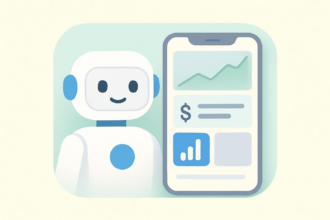


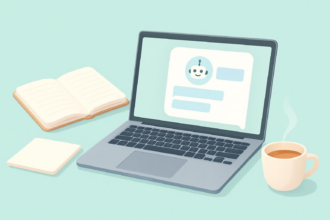
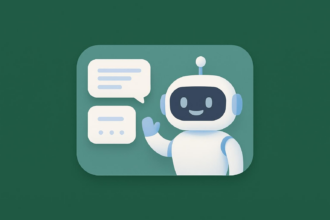


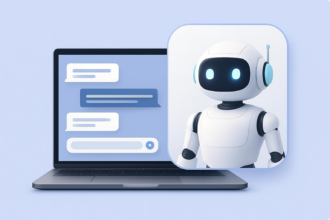


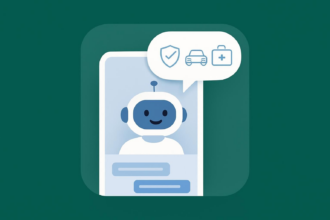


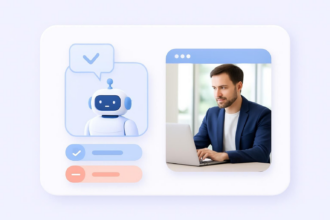

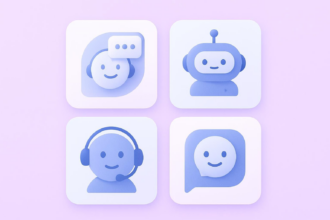
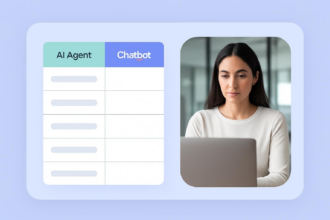


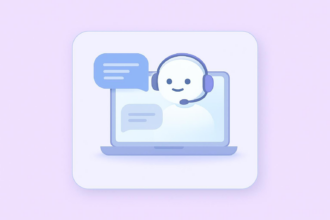
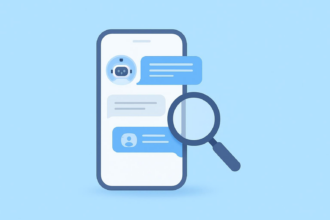









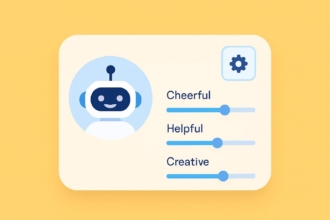
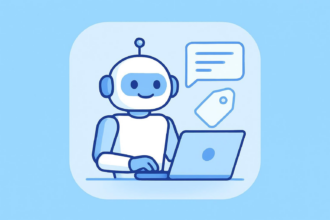


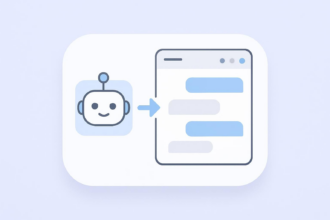

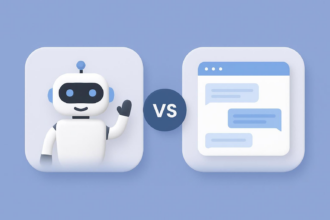
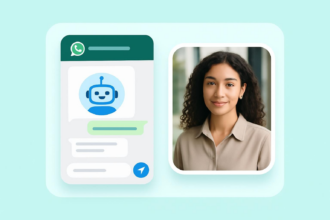
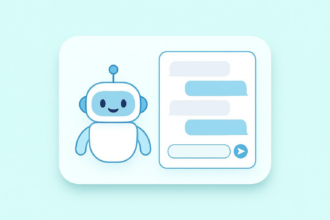
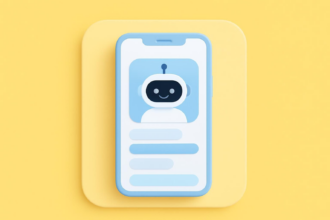

Send Comment: